Legend panel
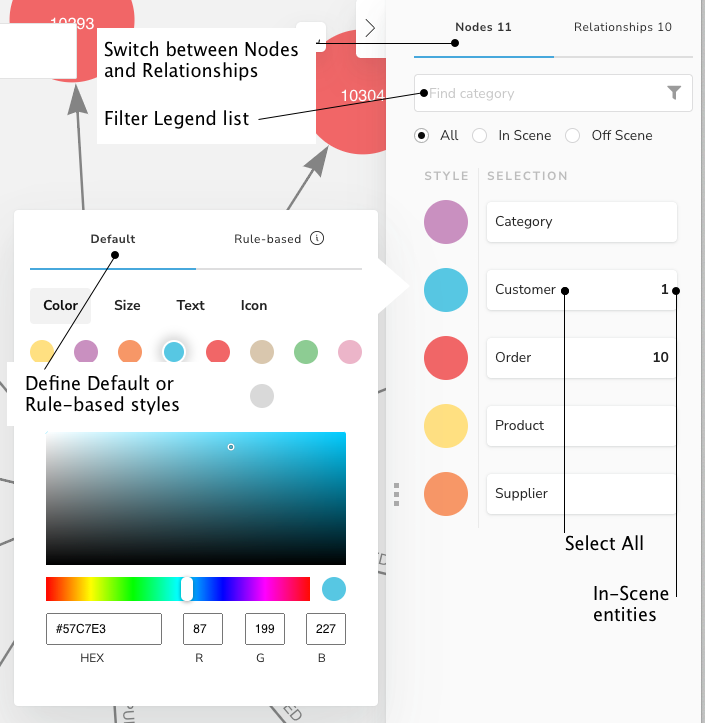
The legend panel shows a list of all categories and relationship types available in the current Perspective, along with the style used to render their nodes and relationships respectively. When the list contains many elements, you can use a filter to limit the legend to show only elements present in the scene, or find those not present in the scene, or search for an element of interest. Click on a category or relationship type in the legend to select all nodes or relationships of that type. A count shows the number of items of a type that are currently visible somewhere in the scene. Styles applied to nodes and relationships can also be changed from this legend panel. You have the flexibility to define the style for an entire category or relationship type, or use data-driven rules to apply styles to specific nodes or relationships. By using the arrow-button you can quickly collapse or expand the legend panel.
Default styling
Using the default style, you can change the color and size of nodes or relationships that belong to a category or relationship type. Additionally, it is possible to change the property (or add more) selected by default to caption the selected category of nodes or types of relationships. You can also customize the caption’s font size, make it bold, italic, or underlined, and change its placement on the node. The same options are available for relationship captions, except for bold, italic, and underline.
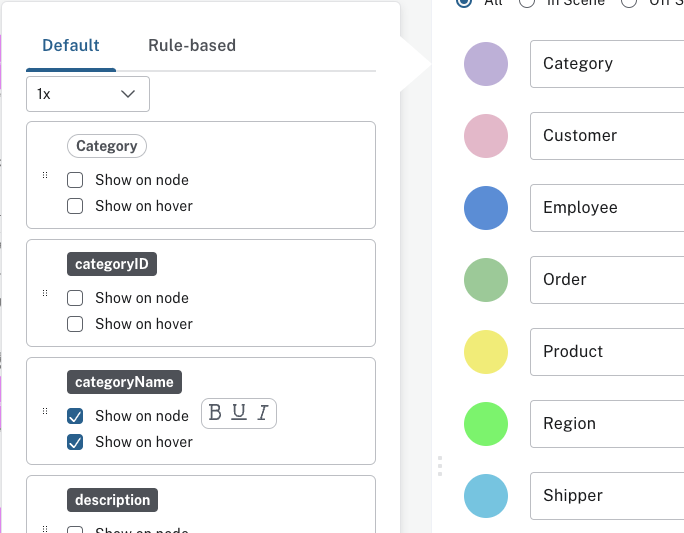
For node categories, you can assign an icon to further differentiate the category.
In cases where a node has multiple labels mapped to different categories, the styling is determined by the category defined first in the Perspective. See Categories for more information.
Rule-based styling
Bloom allows you to set up rule-based styling based on the properties present in your graph.
Rule availability and application varies by the type of a graph element and its available properties.
Rule-based styling is supported for string, numeric and boolean properties.
Temporal properties are also supported, Date, Time, LocalTime, DateTime, and LocalDateTime.
See Parameter data types for more information on temporal properties.
There are three different modes for rule-based styling: single, range, and unique values.
Single
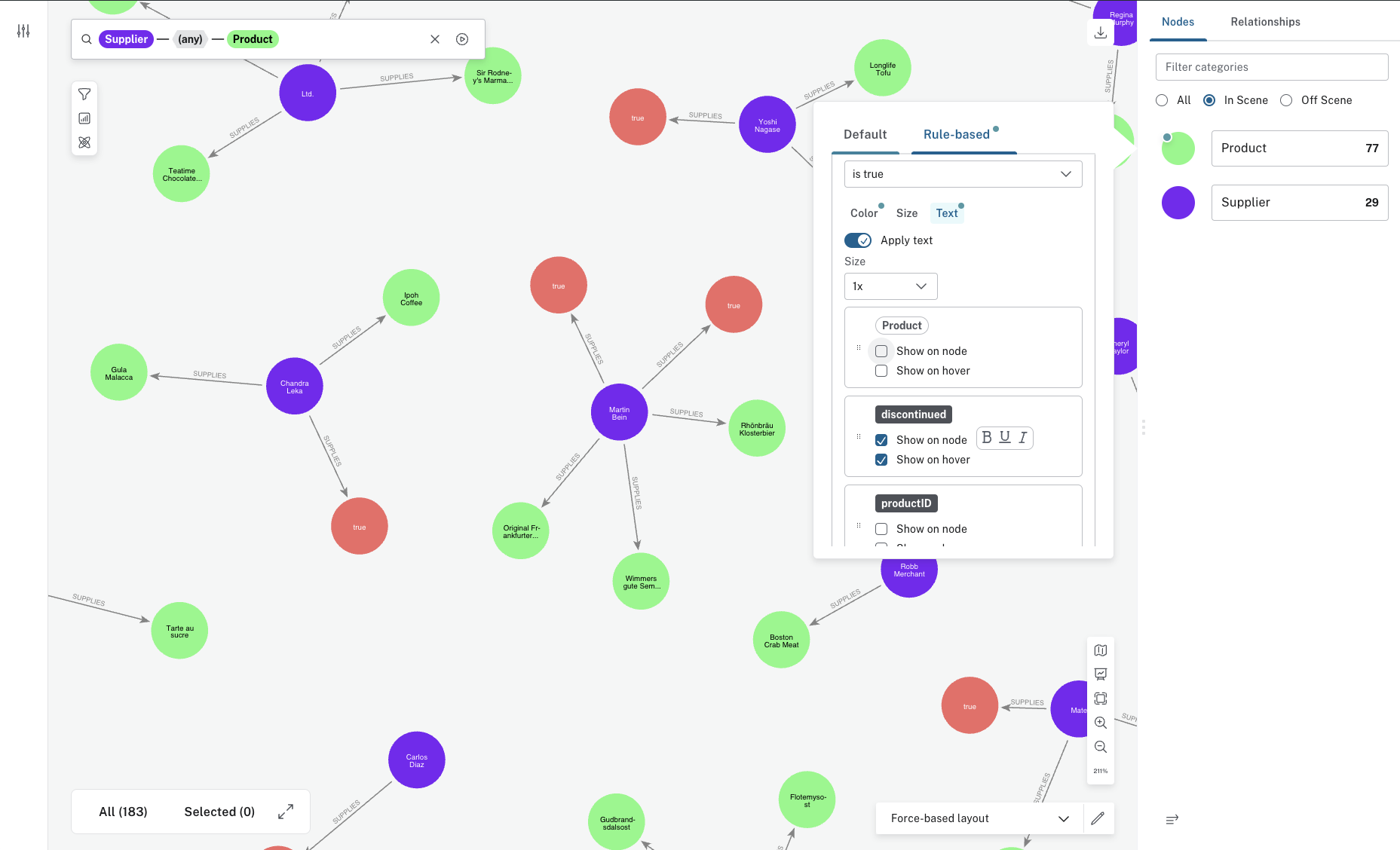
This allows you to set up a rule that applies one single color, size and/or caption based on a condition. For properties with numeric values, a histogram provides an overview of the values present in the current Scene. The slider lets you select a value and apply rule-based styling based on this.
For example, as shown above, a rule defined on a discontinued property of a Product category only applies to Product nodes that have a discontinued value set to true.
In this case, all affected nodes are presented in blue and have their discontinued value as their caption.
If the property is a temporal type using timezones (Time and DateTime), you can base your styling on a selected timezone and translate all time values to that zone by checking the box Translate timezones to and select a timezone.
(Note that Z indicates Zulu timezone, ie. GMT, time offset +00:00.)
If you leave the box unchecked, timezones are ignored.
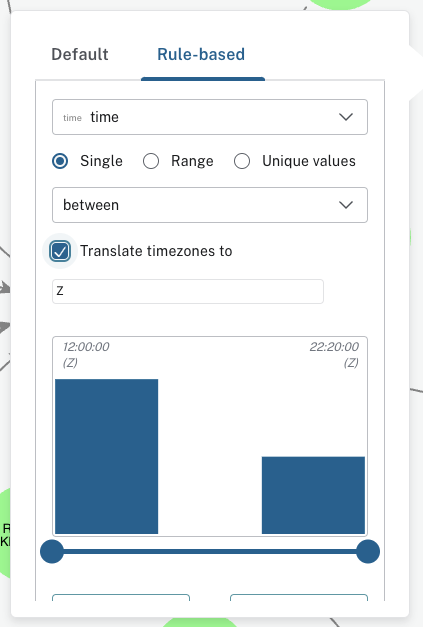
|
Histograms are only available for the single mode of rule-based styling and for properties with numerical values of either |
Range
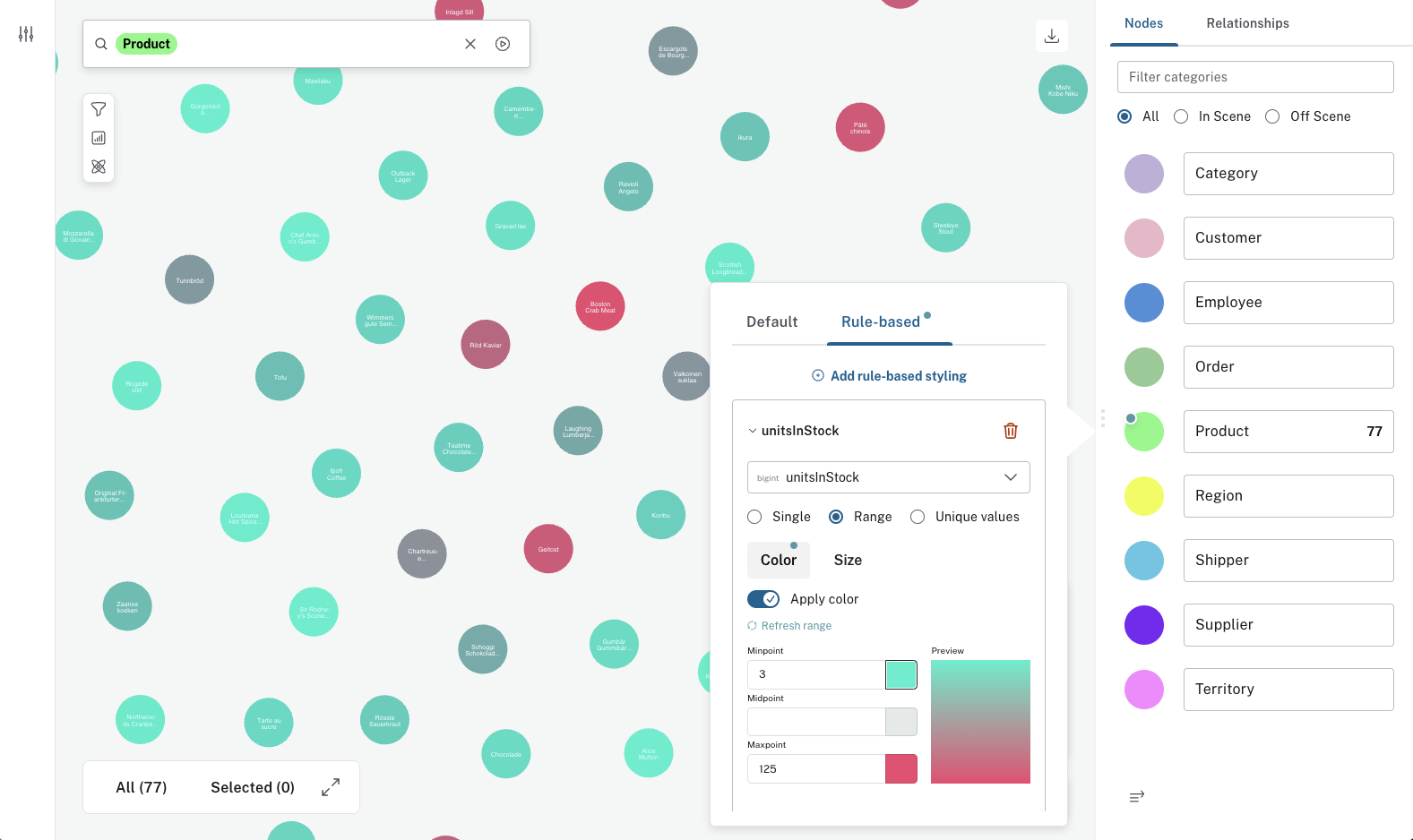
For numeric properties, you can set up a rule that applies a range of colors or sizes to a range of values.
In the image above, a Range-rule has been used to style nodes with the unitPrice integer property with a spectrum of colors from green to red, as well as size nodes from small to big.
For temporal properties using timezones (Time and DateTime), you have the same option to normalize to one timezone or to ignore timezones altogether as above with rules on a single value instead of a range of values.
Unique values
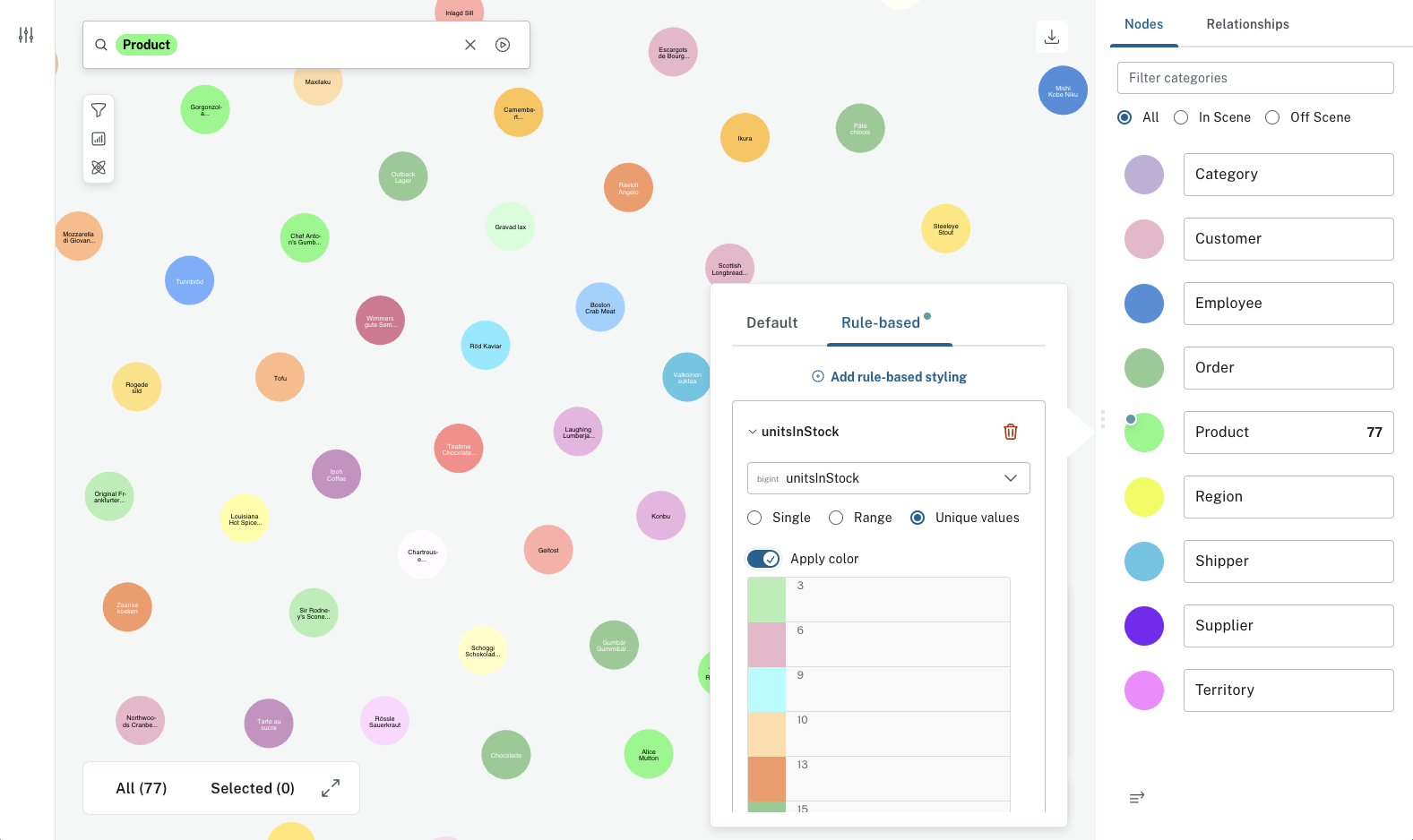
Activate this when you want to assign a unique color to each property value of a given property key.
| Rules override the default style setting such that if no rule is satisfied, the default style is applied. If multiple rules affecting the same attribute (e.g. node color) are specified, the rule that appears first in the list is applied to that attribute. Subsequent rules may still be applied if they affect other attributes (e.g. node size). |